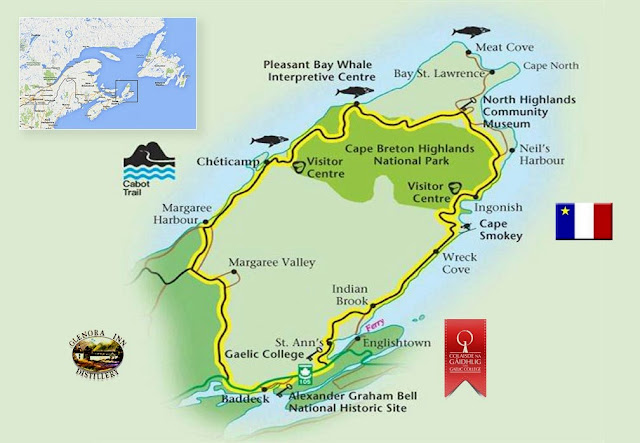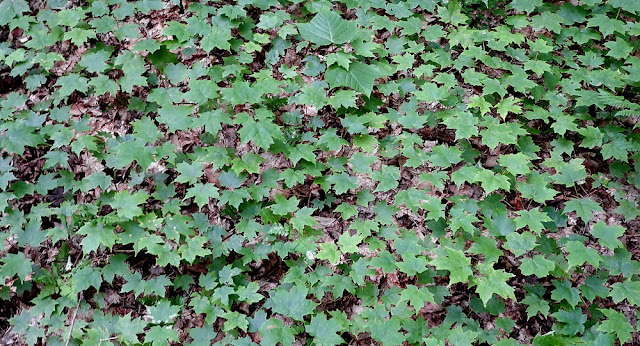The Cabot Trail
Saturday, July 15, 2017
Our entire day today was devoted to the northern half of the Cabot Trail. This is a road which makes a circle around Cape Breton island, and most of the northern part is in the Cape Breton Highlands National Park. It is named for John Cabot, the Venetian explorer who was probably the first European since the Norse to set foot on the North American continent, in 1497.
In the map below, we are staying on the small peninsula between Cape Smokey and Ingonish in the northeast portion of the Island. Our exploration took us counterclockwise, northeast from our hotel, off the trail a bit to go to Neil’s Harbor, and then around the north to the predominately French community of Chéticamp on the west. We then returned the way we came.
Our guide told us that Travel & Leisure Magazine had an issue in which drives were rated for beauty and interest, and this drive was #4 in the world (after drives in Bali, Kauai and Maui). Here’s a sample of what the views are like along the drive:
There are multiple tiny fishing villages along the way:
Our first stop was at the town of Neil’s Harbour, a lobstering community, where the lobster traps are being brought in for storage as the season has just ended in this region:
We continued on the road and came to a short hike at a beautiful woods in the Anse Valley. Here there is a rehabilitated shepherd’s hut called a “shieling” which has two rooms—one for the people and one for the animals:
The woods are 350-year old first growth sugar maple. 95% of the trees in this area are the one species, and it makes for a lovely canopy:
Even the undergrowth is pure tiny sugar maple trees:
As we came to the somewhat wild northwest portion of the road, we were told that the winters here bring enormous gales, with winds of 100 mph not being uncommon. The wires between the poles have unusual wrappings which are said to prevent the winds from setting up resonances which would rip them off of their attachments:
I don’t fully understand this.
In Chéticamp we visited Les Trois Pignons, a center for the art of rug hooking, where they have lecture/demonstrations and a small museum with phenomenal masterpieces of the art:
This was a center of rug hooking in the past, but the art is dying out as it takes enormous time to learn and then to do well, and interest is waning.
We had lunch in Chéticamp at a restaurant with a fiddler. While we were eating, a local 10-year old girl came in and began step-dancing, and she was wonderful! Here’s a short clip of her (click on the arrow):
After lunch we heard the story of the people of this very small town and the surroundings building their church with their own hands of local stone in 1895. It is quite amazing:
We returned the way we came, We did not take the small road up the coast from Pleasant Bay to Red River, but we heard about Gampo Abbey, said to be the largest Buddhist monastery and colony in North America, located there. (https://gampoabbey.org/ )
Tomorrow is the last full day of our trip, and we will start the journey towards Halifax where we will catch a plane on Monday (yes, United again).
















Truly amazing place. Beautiful surroundings and people clearly have built sustainable and comfortable communities. We too often think we need to live in busy, big, noisy spaces, but this region seems a world apart.
ReplyDeleteWonderful views, and interesting facts about a very different way (or ways) of life from what I've known. The wrapping around the wires reminds me of how the strings of a clavichord are treated: the key that you press lifts a "tangent" (hard metal flange) that presses against the middle of a string, and one end (ca. half) of the string vibrates to give out the required pitch. And the other end (half) has yarn or thin strips of cloth wrapped around it, so it doesn't vibrate. I suppose the energy gets dissipated somewhat randomly through the wrappings, hence there's no longer any periodic vibrating in that half of the string that would produce an audible sound. A bit the way that a violin or harp string stops sounding if you touch it even lightly.
ReplyDelete